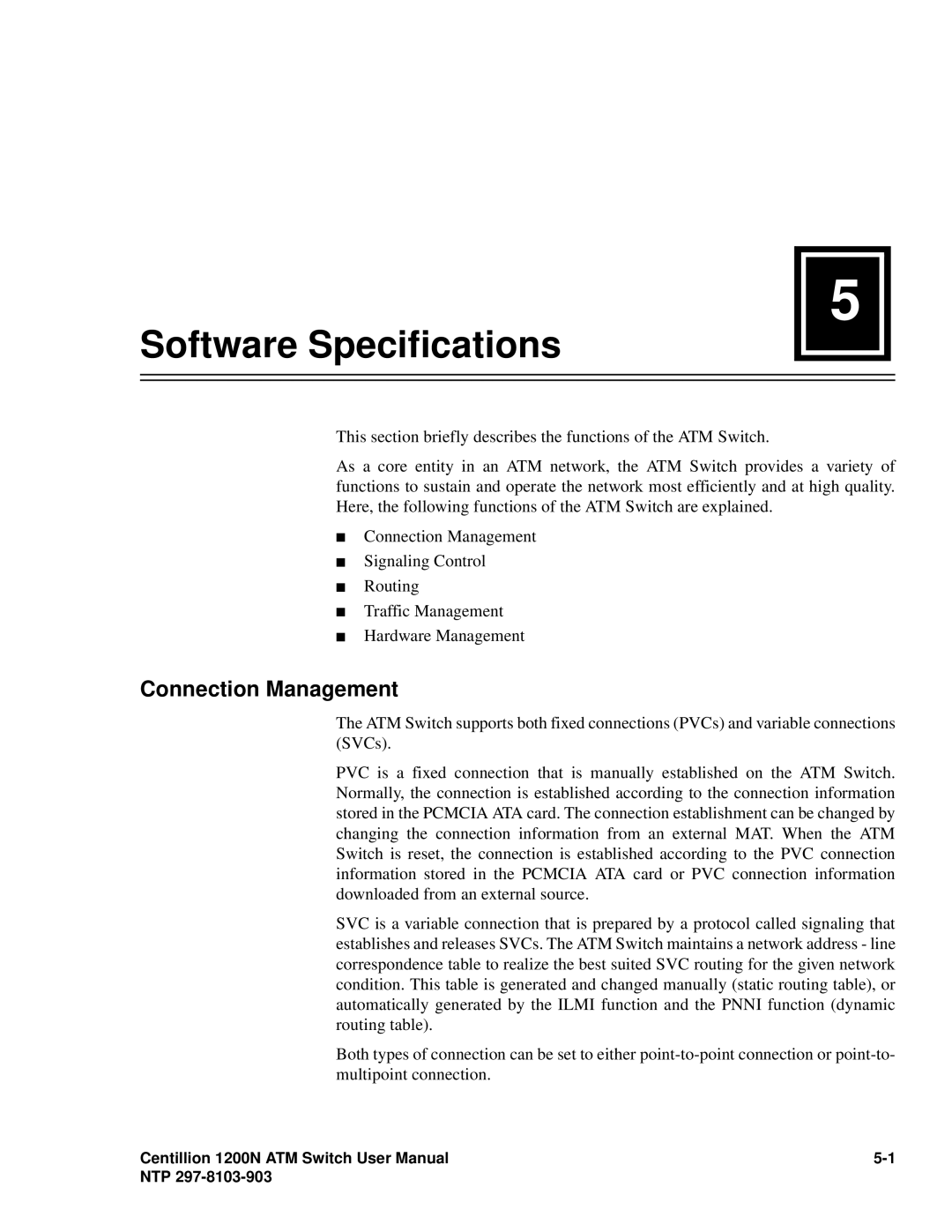
![]()
![]() 5
5 ![]()
![]()
Software Specifications
This section briefly describes the functions of the ATM Switch.
As a core entity in an ATM network, the ATM Switch provides a variety of functions to sustain and operate the network most efficiently and at high quality. Here, the following functions of the ATM Switch are explained.
■Connection Management
■Signaling Control
■Routing
■Traffic Management
■Hardware Management
Connection Management
The ATM Switch supports both fixed connections (PVCs) and variable connections (SVCs).
PVC is a fixed connection that is manually established on the ATM Switch. Normally, the connection is established according to the connection information stored in the PCMCIA ATA card. The connection establishment can be changed by changing the connection information from an external MAT. When the ATM Switch is reset, the connection is established according to the PVC connection information stored in the PCMCIA ATA card or PVC connection information downloaded from an external source.
SVC is a variable connection that is prepared by a protocol called signaling that establishes and releases SVCs. The ATM Switch maintains a network address - line correspondence table to realize the best suited SVC routing for the given network condition. This table is generated and changed manually (static routing table), or automatically generated by the ILMI function and the PNNI function (dynamic routing table).
Both types of connection can be set to either
Centillion 1200N ATM Switch User Manual | |
NTP |
|
